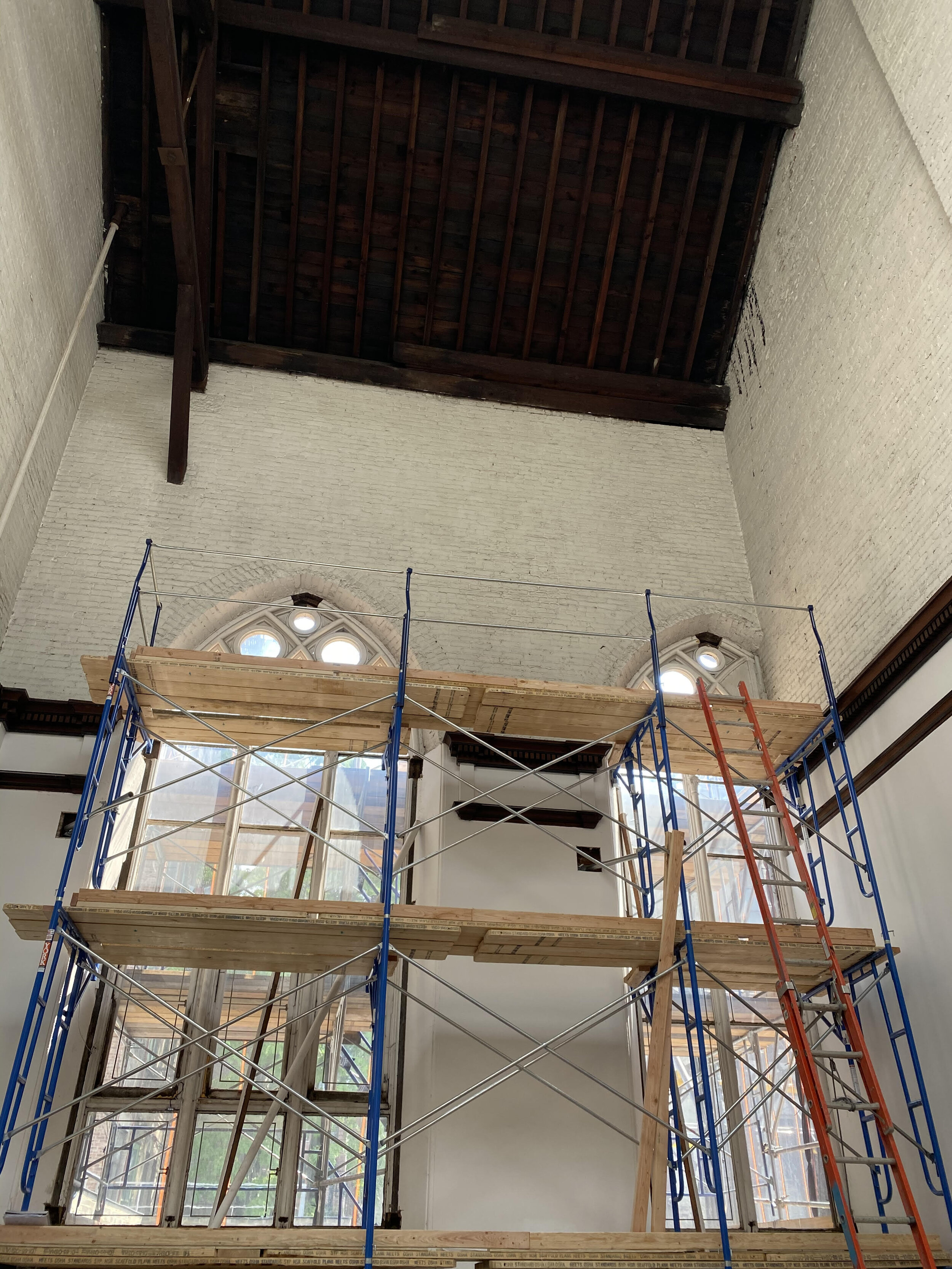Helping to restore New York City’s historied buildings connects us to the City’s past in a way that few others get to experience. The Robert Rauschenberg Foundation’s premises on Lafayette Street has a rich and varied history, and now we’re a small part of that.
In 1839, the building’s address was 6 Lafayette Place, and was the center of an exclusive enclave for the city’s wealthy. The impressive four-story, 27-foot wide residence with a high stoop signaled the social and financial status of the owner, Alexander Mactier, a well-known merchant, to passersby.
By the late 1860s commercial encroachment sparked a migration of the elite from the neighborhood, including No. 6’s current owner, Dr. Alexander H. Stevens. This marked a two-decade period where the building’s occupants included a European milliner (Madame Ferrero), a doctor of somewhat dubious methods (Dr. Stuart), then it was sold (Parker & Julia Mann), then swiftly sold again in 1888 to the Mission of the Immaculate Conception. Eight years prior, the Mission erected the St. Joseph’s Home for “friendless children” next door at 2 and 4 Lafayette Place. The newly acquired premises at 6 Lafayette Place would serve as the Mission’s administrative offices, a convent and chapel for the Sisters of St. Francis.
1897 Bromley map of Lafayette Place. The Mission of the Immaculate Conception is at the corner of Lafayette and Great Jones Street.
The Mission wasted no time in commissioning architect Benjamin Lowe to renovate the building. His $40,000 renovation included “raised two stories, one-story and basement extension, interior alterations and walls altered” according to his filing with the City. Lowe removed the high stoop but retained the original entrance lines, resulting in an impressive two-story high doorway. He constructed a chapel in the rear. The Northern Renaissance Revival façade boasted a striking combination of terra cotta, red brick, and brownstone. The façade is embellished with deeply corbelled cornices and ornate bandcourses. Eyebrows and elaborately decorated bowls dress the windows.
History soon repeated itself. The neighborhood again underwent yet another change, and by 1918 the Mission moved St. Joseph’s Home to Staten Island, but still retained 6 Lafayette. The former boys home sat empty for seven years before the Grand Lodge of the Order of the Sons of Italy purchased 2 and 4 Lafayette for a proposed Italian community center.
Despite launching an impressive capital campaign, the property went into foreclosure, and the Mission resumed ownership in 1928. They sold the property in 1929 to Sobol Brothers, and the buildings were razed to make way for a gas station.
381 Lafayette Street, home of the Robert Rauschenberg Foundation today.
Somewhat miraculously, the Mission remained at what is now 381 Lafayette Street until 1965. By then, the neighborhood was a warehouse district and rather down on its luck. The Mission sold the property to Albert N. Roemer, who planned to “alter the building.” Instead, Roemer quickly resold the building to the artist Robert Rauschenberg to serve as his studio, storage for his large-scale pieces, and his home in New York City.
In 1969 the structure suffered a fire, but amazingly no one was injured— Rauschenberg was on his way to Los Angeles at the time. The responding firefighters vented the building through a fifth-floor skylight. The brick building held the fire and smoke, which was released by breaking the windows. Amazingly, the sculptures, including “Oracle” valued at $120,000 at the time, and other pieces only sustained minor damage.
Rauschenberg believed in art as a catalyst for social change and began the Robert Rauschenberg Foundation to support causes he valued—world peace, the environment, and humanitarian issues. He began and emergency grant for visual artists in financial need. He leveraged art in civil discourse through the Rauschenberg Overseas Culture Interchange.
Rauschenberg continued to live and work at both 381 Lafayette Street and his Captiva Island, Florida homes until his death in 2008. The Lafayette property was transferred to the Foundation, where today it supports artists, initiatives, and institutions that embody the same innovative, inclusive, and multidisciplinary approach that Rauschenberg exemplified in both his art and philanthropic endeavors. The Foundation hosts artist residencies both in New York City and at Rauschenberg’s Florida home.
Interior scaffolding for two of the window replacements.
In 2008 our friends at Preserv completed a restoration of the façade, bringing it back to its formal glory in Lowe’s time. They rebuilt the cornice, cleaned and repointed the brick, and repaired damaged brownstone.
Our work in 2020 is replacing three of the massive gothic arched windows with hand-carved Honduran mahogany units. Just one of the windows measures 83 inches wide by 219 inches tall.
While meeting all the Landmark Preservation Commission requirements, Historical Windows of New York is also bringing the windows into the 21st century with high performance glass. The glass is tempered for safety, with a low-e coating and argon-filled for energy efficiency.
We’re proud to be a part of a new chapter in this historic building’s story.




